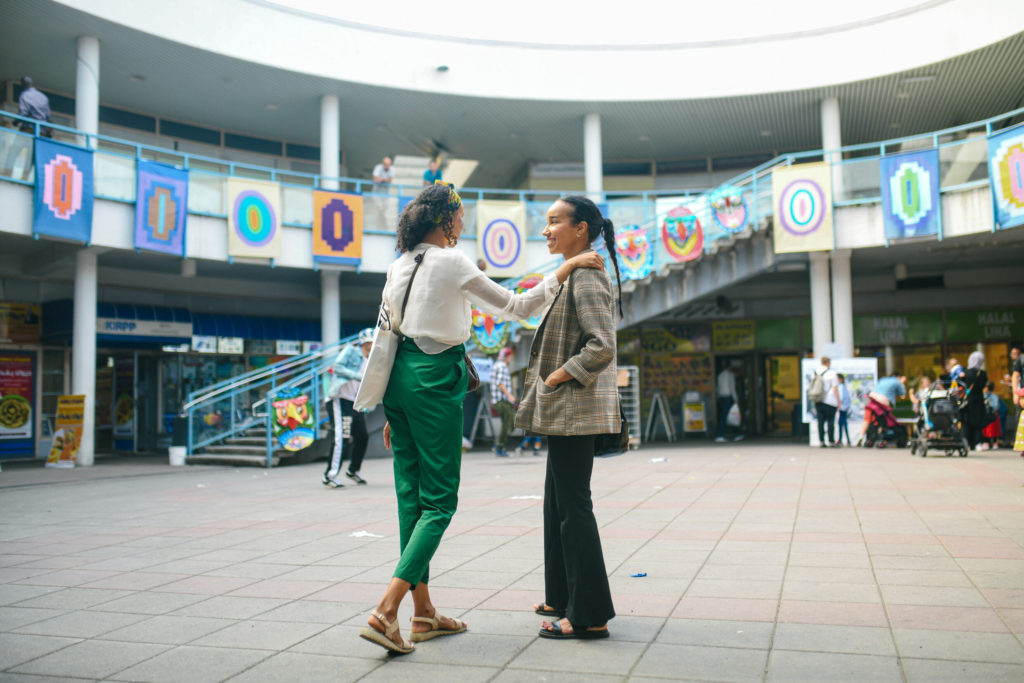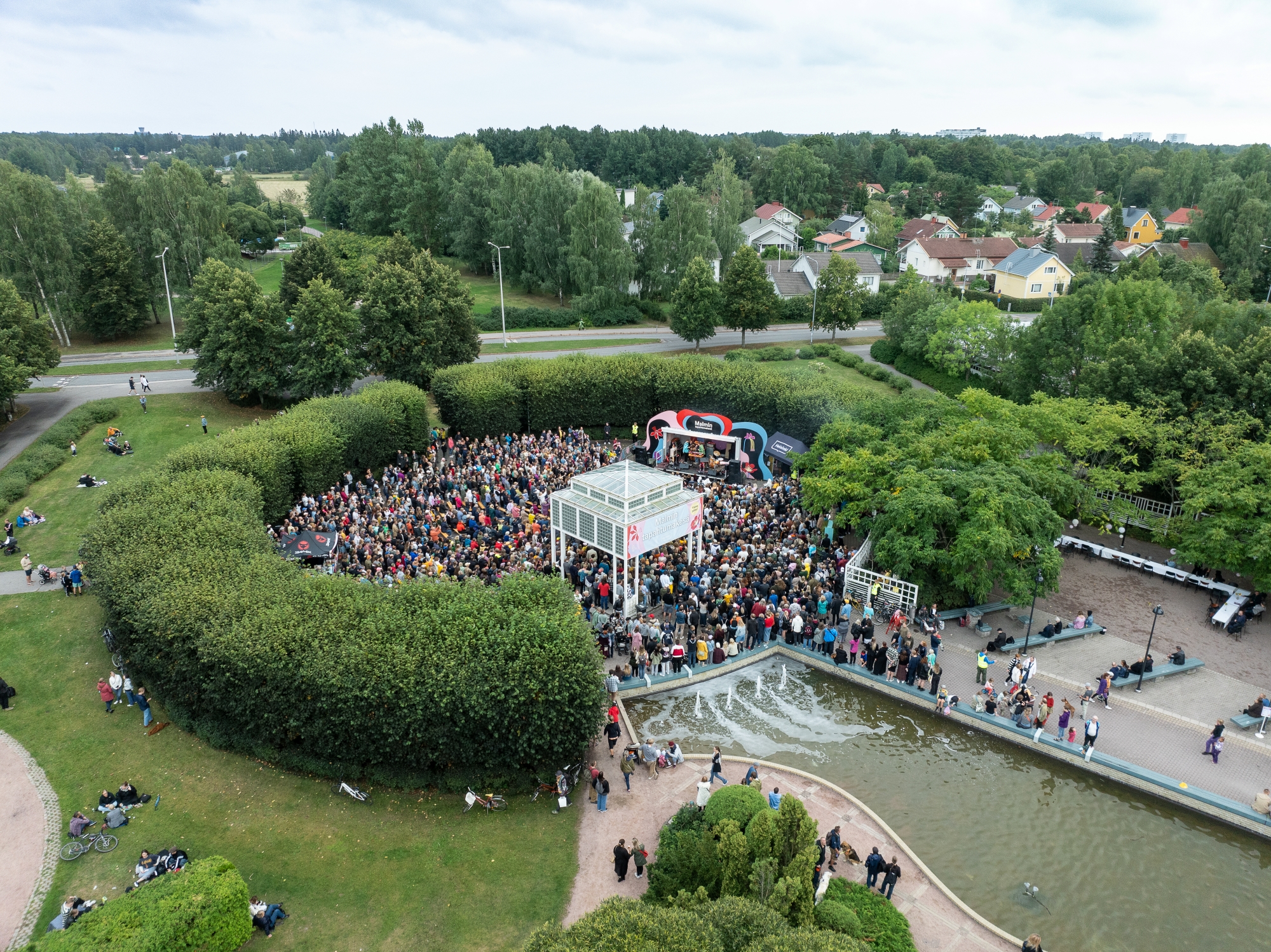
The City Council approved the Implementation Programme on Housing and Related Land Use 2024 (the AM programme) in August 2024. The programme was prepared at a time of exceptional uncertainty in terms of housing construction and housing policy, where the role of large cities such as Helsinki in addressing housing issues was highlighted.
The vision of the AM programme is for Helsinki to grow in a socially sustainable way. Diverse and high-quality housing options are a vitality and attraction factor for the city, and every Helsinki resident has the opportunity for good housing. Helsinki provides functional living environments for families and develops neighbourhoods in a determined way without increasing regional segregation. Residential construction is carried out with respect for nature, recreational and cultural values. Social sustainability and growth aspects are more prominent in the 2024 AM programme than in the previous programme drawn up four years ago.
Affordable housing remains a challenge
As the COVID-19 pandemic subsided, the housing market and construction industry began to feel the effects of Russia’s invasion of Ukraine. Rising energy and building material prices pushed up housing and construction costs. At the same time, interest rates started to rise rapidly after a historically long zero interest-rate period. Inflation increased significantly and consumer confidence fell to a low level. Many households postponed their home purchase plans due to the uncertain situation. Indeed, the busy housing market virtually came to an abrupt halt in the last quarter of 2022.
As economic growth slowed down and the housing market dried up, the construction industry faced a crisis also in Helsinki. In particular, the rise in interest rates reduced investor demand, and financing for non-subsidised construction projects became significantly more difficult to obtain. The high volume of newly finished housing, combined with low demand, has increased the stock of unsold new homes and empty rental properties. The situation has been particularly reflected in the number of building permits and new housing construction projects. Furthermore, the organisation of housing for Helsinki residents is challenged by the policies and implementation of the Government Programme (June 2023), such as the overall housing allowance reform, the introduction of income limits for rental housing supported by the state with long-term interest-subsidy loans, the end of investment subsidies for housing for special groups, and the end of interest-subsidy loans for new right-of-occupancy housing.
The AM programme is centred on providing neighbourhoods with a diverse housing stock in terms of occupancy and funding type. A diverse housing stock offers housing options to suit different life situations and needs, and helps prevent regional segregation and concentrations of disadvantaged people. A diverse housing stock also allows for continuity of housing paths within the area, ensuring long-term commitment to the neighbourhood. Helsinki will continue to ensure a diverse range of housing options in neighbourhoods through various means in the current AM programme period. The most significant new initiative in the 2024 AM programme is the piloting of the new rent-to-own model. This is a new model of housing, falling somewhere between owner-occupied and rental housing, and is aimed at partially the same target group as right-of-occupancy housing. Housing models between owner-occupied and rental housing are of great importance not only for residents, but also for the neighbourhoods whose housing and population structure they diversify.
Helsinki is committed to reducing homelessness and has set a target in its City Strategy to eradicate homelessness by 2025. Indeed, the number of unhoused people has fallen steadily over the last ten years thanks to the measures taken to reduce homelessness. Through housing counselling, the City of Helsinki has been able to contribute effectively to the prevention of homelessness. Homelessness has also been reduced through the provision of both supported and independent rental housing for unhoused people. There has also been a large supply of rental housing on the housing market in recent years, and rents have not risen significantly, making it easier to find housing. It is important to continue to support the client after they have obtained housing, for example through housing counselling and adult social work, to ensure the continuation of their housing. Despite good progress, determined action is still needed to reduce homelessness.
Suburban regeneration firmly established as an operating model
Suburban regeneration is an operating model launched in the 2020–2023 AM programme period, which aims to promote the vitality and pleasantness of the suburban regeneration areas through urban development. Suburban regeneration is carried out in cooperation with local residents and operators, taking into account the specific characteristics of the area. Suburban regeneration is about long-term area development and the positive special treatment of designated areas in line with the City Strategy. Some of the effects of suburban regeneration are felt quickly in the areas, for example in the form of improved services, but the most significant effects will only be felt in the areas after several years. This is why the long-term target year for suburban regeneration is 2035. In the 2024–2027 AM programme period, Kannelmäki–Malminkartano, Malmi, Mellunkylä and Meri-Rastila will continue as suburban regeneration areas. This is because achieving clear change in the areas requires systematic development and significant investment, and the processes of regenerating the environment take a long time.
In the early years, the City has made investments in the suburban regeneration areas and has renovated facilities such as playgrounds and local sports facilities. Furthermore, cooperation within the City has been improved and new cross-administrative models have been developed, for example in housing construction, school services and area networks for children’s and youth services. To strengthen resident participation, the City has organised residents’ coffee dialogues in the suburban regeneration areas, where the development needs of the areas have been discussed based on themes set out by the residents. Suburban regeneration has become a well-established, City-wide operating model to which all divisions are committed. In 2022, the City drew up a comprehensive action and investment plan on the projects to be implemented in the suburban regeneration areas between 2022 and 2025, based on the budget. The project portfolio contains the key measures of all divisions and addresses the objectives set for suburban regeneration. The portfolio also includes the overall plans for all of the suburban regeneration areas, describing the direction of their long-term development. The project portfolio is supplemented each year, as the City allocates new measures to the areas. At the same time, the effectiveness of the measures and plans is assessed.
During the 2024 AM programme period, the City will continue the suburban regeneration with determination. In 2024, the City appointed project directors responsible for the City-wide development of services in the suburban regeneration areas. In the coming years, suburban regeneration will focus on responding to the needs of the areas flexibly in cross-administrative cooperation and creating visible changes to improve the comfort of residents.
Successes:
- The City adopted the 2024 AM programme, which means that there is a shared will in terms of housing policy, especially in terms of ensuring socially sustainable growth.
- Suburban regeneration is firmly established as an operating model, and commitment to it has been strengthened within the City organisation.
- The City has decided to pilot a rent-to-own model, which will contribute to addressing the changed operating environment in housing.
Areas for development:
- The suburban regeneration work will continue, and operating methods will be developed to increase effectiveness. Achieving visible change requires targeting resources and responding flexibly to the needs of the areas.
- New housing policy tools are being identified in the changed environment to curb neighbourhood segregation and housing costs.
Programmes and websites:
Implementation Programme on Housing and Related Land Use
Suburban regeneration
Urban development


